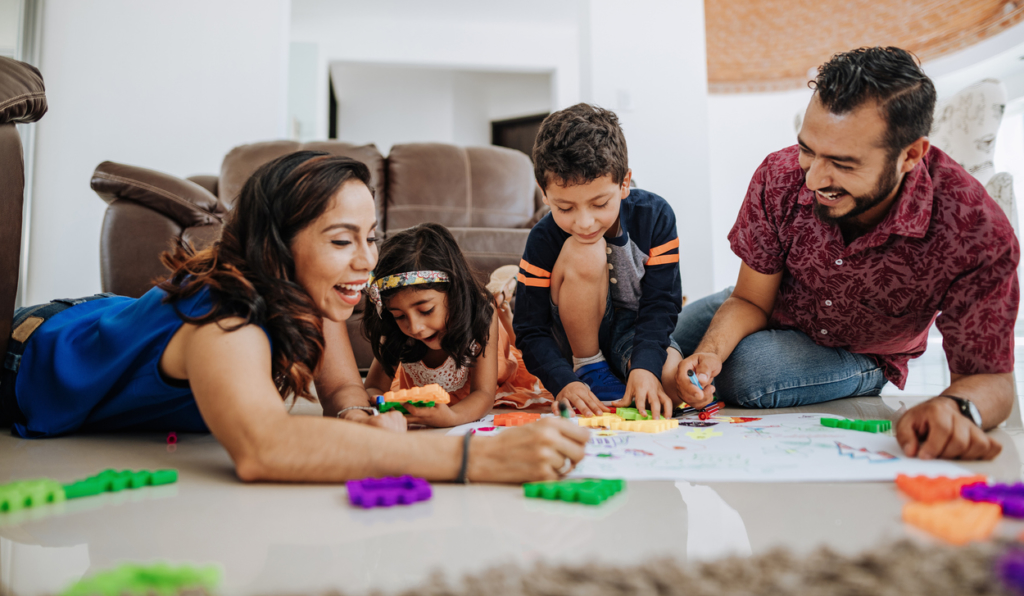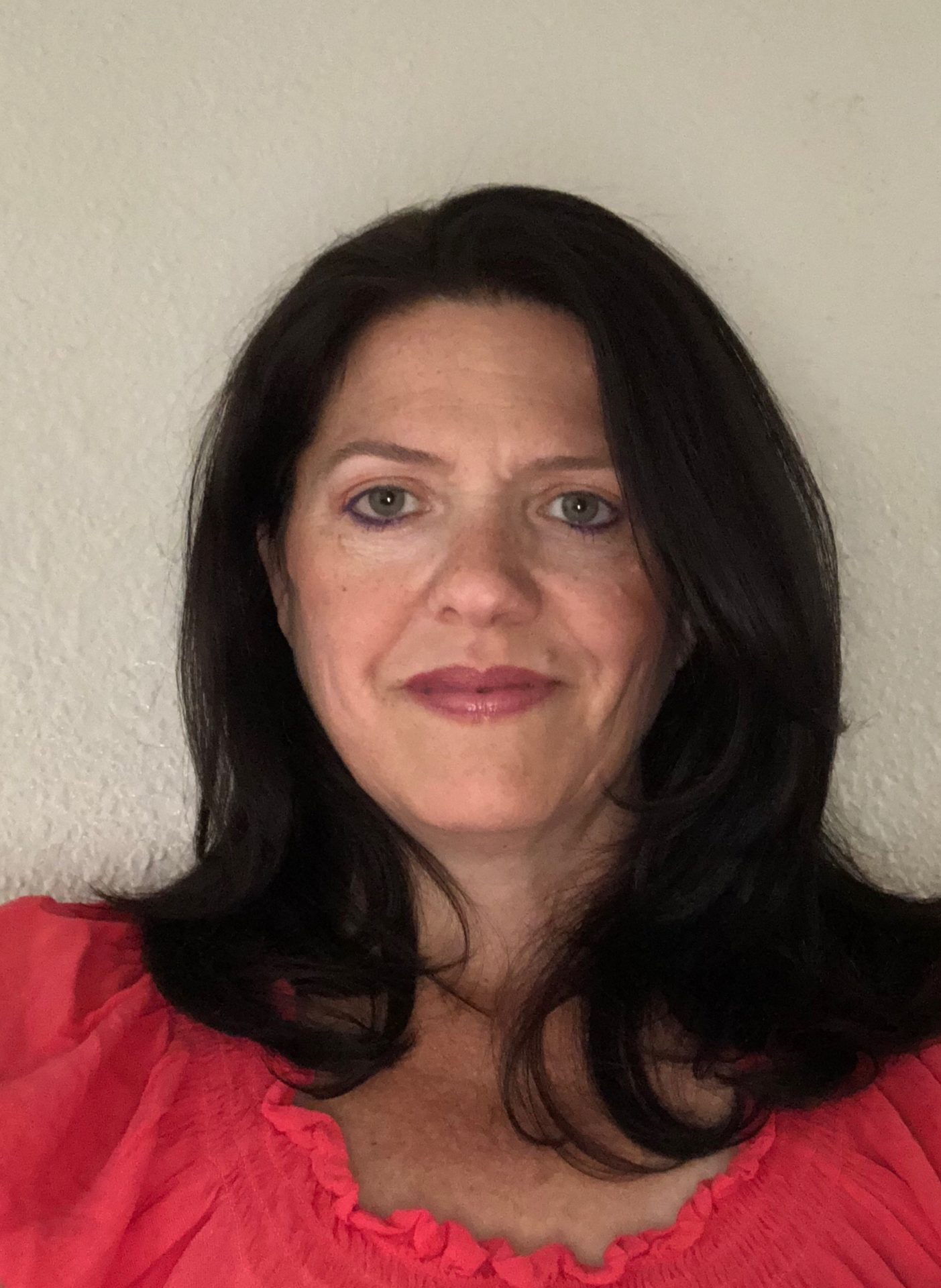Nobody could have foreseen a global pandemic shutting everything down. But, there’s no reason, by phone or email, we can’t touch base with the families we serve. Relationships are not closed.
Cinnamon Scheufele, Principal
Q: When Lindsay USD received news on March 16th that they would need to shift to distance learning, what ran through your mind?
Cinnamon: From a safety standpoint, I knew this was the best move. But, there was still a wave of sadness that hit us. For many of our learners, school is the place where they feel safe, happy, and wanted. It’s where they eat and have positive connections with adults. And, many of our parents work in essential businesses like agriculture, so we worried about our learners being home alone or feeling the need to work to help support their families. There was definitely an air of worry.
We didn’t have much time to dwell on that because we needed to get prepared within 48 hours before our distance learning was in place. For many adults and learners, there wasn’t time to grieve. During the first week of implementation, we began noticing how differently this was occurring to each person in our learning community.
Q: Grief is such an appropriate way to frame the experience of our communities nationwide. Given the diversity of experiences everyone was having in the first week, how did you manage those who were ready to go right away?
Cinnamon: Some learners felt like, “What’s the big deal? Let’s just move it along. Why are we having to wait even a day? I’m ready to go.” That is the beauty of our system. Because we’ve been on our transformational journey since 2007, many of the things other districts are battling with during the pandemic aren’t something we struggled with.
After stakeholders came together to complete our strategic design in 2007, it was clear we needed many new structures and processes in place to bring our vision to life. One of those elements was bringing free Wi-Fi to every learner in the community, and making sure every learner had a device that they could use at home. Equity concerns around access to learning, who has access and who doesn’t, is something we addressed long before our facilities closed. This meant it wasn’t a piece of this transition we had to struggle with.
Because of this, all of our learners can access their work online through our Learning Management System, making the transition on the academic side so much easier.
For learners who were ready to go right away, they didn’t have to wait for the adults to pass along new lessons or learning opportunities to them. Their pathways were already laid out online, readily available for them to access. The only missing piece was figuring out how our learning facilitators would connect with learners in real time to help support them in a new way. The logistics took some time to figure out, but we expected that. The learning facilitators are amazing problem solvers.
Q: For those who needed more time to cope, how did you support them?
Cinnamon: For learners who were experiencing the situation differently, wondering when we might return—be it in a few weeks or not until the fall—I think it took some time for everyone to wrap their heads around it and build a basic level of preparedness for what was to come.
We actually created a taskforce of people that began laying out how we could be “in-the-know” about each of our learners. Depending on the connections and relationships that learners had with the adults at the learning community, we started assigning learner check-ins based on which learners we were closest to.
For instance, if we had a learning facilitator inform us they hadn’t been able to reach one of their learners, that learner would immediately be added to our check-in list. If we still couldn’t reach them, we sent out a postcard asking them to check in with us.
Sometimes we’ll discover that a learner has gone to work with their parents. We realize they’re helping their family and they’re old enough to do so; but they still want to log in and make progress on their learning, even if it’s outside regular hours. Our sessions are recorded, so we simply ask them to let us know how their schedule has adjusted, so we can know when to look for their progress.
I think that the number one thing that helped ground us during this transition was our culture.
Cinnamon Scheufele, Principal
A different scenario came from an email a learning facilitator received that simply didn’t “feel right”. She just had a hunch one of our learners might not be okay. We had our counselor check-in with that learner and parents. Ultimately, we decided, with the family, to ask our school resource officer to do a welfare check at the home. The learner and family were grateful for the support.
The way we connect with each learner is based on their unique needs. Some check-in with whoever is available, while others have certain adults they like connecting with. Even before we were all at home, I’ve always had one learner who only wants to check-in with me. He has a very loving family, but they are in a very difficult situation.
During this unique moment, I asked him, “Why do you want me as your check-in person?” He said that a lot of things had been on his mind lately, and “You’re kind of like my mom at school.” I check in with him through email regularly.
When learners get into junior high, lots of stuff starts weighing on your mind that you simply didn’t think about as much when you were little. And, with our facilities being closed, those are the learners that are really on your mind. You can’t stop wondering how they are doing.
Q: Have you felt that motherly role in other situations?
Cinnamon: I think that the number one thing that helped ground us during this transition was our culture. And, I really see my Principal role as a motherly one. Our culture is built in a way where everyone feels like family. Thinking of myself in that light, I knew I needed to help calm our learners during this transition.
Many of our learners were very anxious. We didn’t have a lot of answers for them about how long we would be at home or the exact steps we would be taking for at-home learning, but simply reassuring them everything was going to be okay and that we would work through these challenges together helped ease their worries.
Our parents were worried, too. Many families participate in our meals program that provides free breakfast and lunch. And, some receive a third meal through our after-school program. Learning was a secondary concern if we couldn’t find a way to bring our families food security.
Reassuring parents with really clear, constant communication about how things were going to happen was essential. We might not have an answer today, but we would by tomorrow. This communication and follow through helped everyone remain calm and informed.
Our lines of communication were wide open. No matter who a parent needed to get in contact with, whether it was me, a learning director, a counselor, our office manager, or anyone else, everyone needed to be reachable.
We’re not disappearing from you. We’re not closing school. We’re closing the building. That was a theme we picked up on right away. We needed to stop saying “school closure” and start saying “facility closure.” School is still in, and learning is still happening!
Q: For anyone looking to start their own learning community’s transformational journey, what would you say is the most important first step to take?
Cinnamon: Building relationships is everything. Children don’t learn from people they don’t like, or that they feel don’t like them. When issues do arise where a learner disagrees with a learning facilitator or a learning facilitator is having difficulty with a learner on a particular day, they have a relationship in place that creates room for those emotions to come out and not become a permanent story.
We always seek to understand one another, rather than assuming. Even if you’re right nine out of ten times, being wrong that one time leaves that learner feeling misunderstood and disengaged.
These relationships open the door to learner voice and choice becoming a natural part of our learning environments. Having it be a partnership in learning increases ownership and learner agency. It provides learners the opportunity to drive their learning and bring up questions they may have otherwise been afraid to ask in a different learning environment.
If a learning facilitator suggests an idea, the learner can feel empowered to make another suggestion. Together, they identify their skills and competencies and set their path and pace for learning—avoiding situations where an individual learner might have to sit through work or lessons they already know. When learners have to sit through work that doesn’t connect to anything they’re interested in learning about, that’s a huge motivation killer. Why would we do that?
Q: For districts that may not have had the technology in place to make this transition as smooth for their communities, where would you suggest they focus their efforts?
Cinnamon: I completely understand that every district isn’t set up to do distance learning right away. Nobody could have foreseen a global pandemic shutting everything down. But, there’s no reason, by phone or email, we can’t touch base with the families we serve. Relationships are not closed. Basic human rights are not closed. Respect is not closed.
Just reaching out, regardless of the hurdles you’re trying to get over on the instructional side, creates a level of closeness and care we all need. I think about it in the frame of my own children. I can’t imagine going weeks into a pandemic and not reaching out to them. The relationship with learners is different from a parent’s relationship with their own children, but it’s pretty close.
I’ve heard people in other districts say they don’t want to share their phone number. We understand that. That’s why we use Google numbers. Every time we call, a different number shows up, and it can be turned on and off, so people aren’t calling us back at inconvenient times.
Not everyone needs to be checked on every day. But, for other learners who are really struggling, we need to make sure we are there for them. As we learn to navigate the new normal, one thing I’m very aware of is how gifted my learning facilitators are, and how much they care. They are doing tremendous things to support learners in every situation imaginable. I am proud of them and proud to be their principal.

